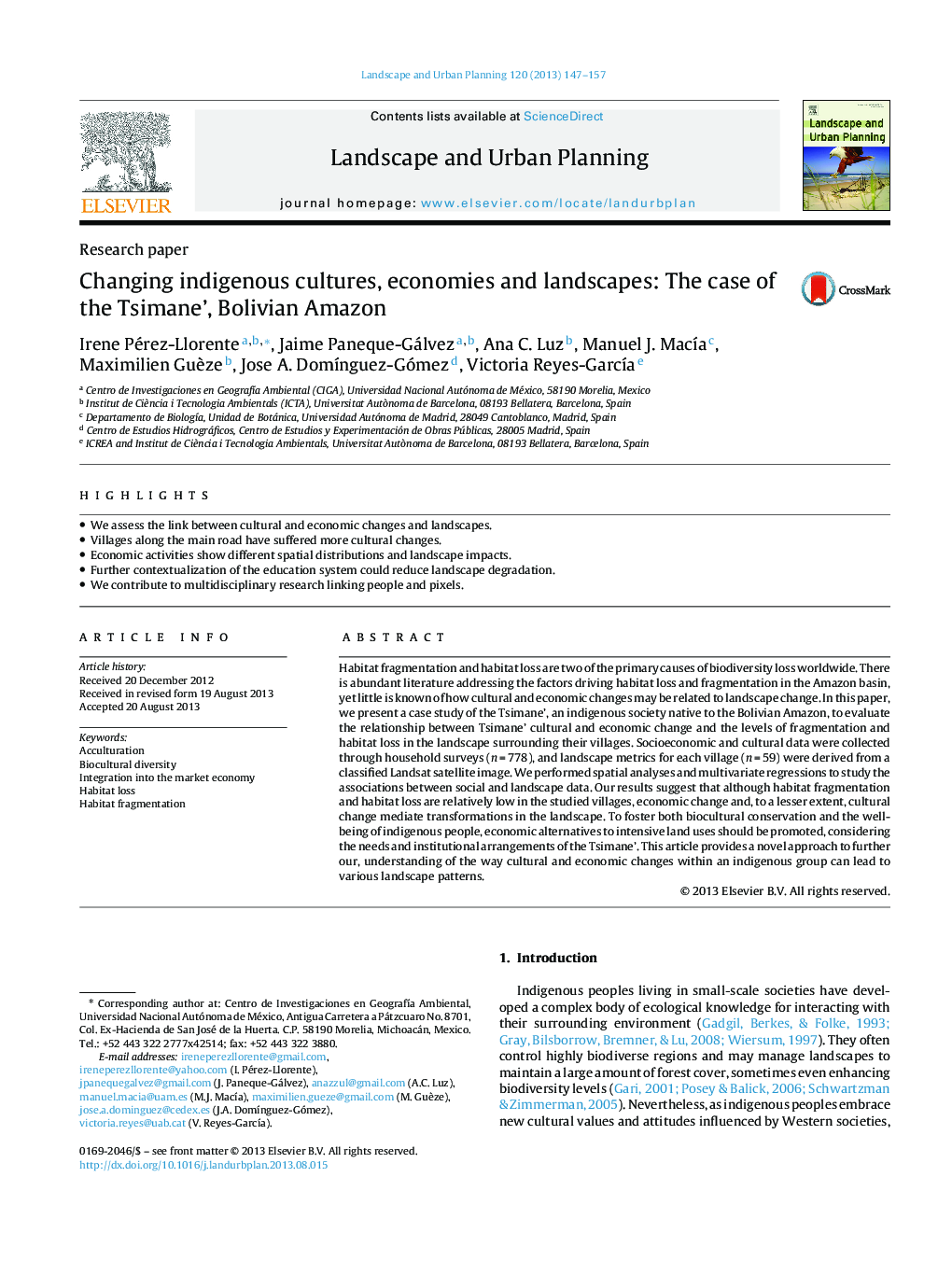| Article ID | Journal | Published Year | Pages | File Type |
|---|---|---|---|---|
| 7461822 | Landscape and Urban Planning | 2013 | 11 Pages |
Abstract
Habitat fragmentation and habitat loss are two of the primary causes of biodiversity loss worldwide. There is abundant literature addressing the factors driving habitat loss and fragmentation in the Amazon basin, yet little is known of how cultural and economic changes may be related to landscape change. In this paper, we present a case study of the Tsimane', an indigenous society native to the Bolivian Amazon, to evaluate the relationship between Tsimane' cultural and economic change and the levels of fragmentation and habitat loss in the landscape surrounding their villages. Socioeconomic and cultural data were collected through household surveys (n = 778), and landscape metrics for each village (n = 59) were derived from a classified Landsat satellite image. We performed spatial analyses and multivariate regressions to study the associations between social and landscape data. Our results suggest that although habitat fragmentation and habitat loss are relatively low in the studied villages, economic change and, to a lesser extent, cultural change mediate transformations in the landscape. To foster both biocultural conservation and the well-being of indigenous people, economic alternatives to intensive land uses should be promoted, considering the needs and institutional arrangements of the Tsimane'. This article provides a novel approach to further our, understanding of the way cultural and economic changes within an indigenous group can lead to various landscape patterns.
Related Topics
Life Sciences
Agricultural and Biological Sciences
Ecology, Evolution, Behavior and Systematics
Authors
Irene Pérez-Llorente, Jaime Paneque-Gálvez, Ana C. Luz, Manuel J. MacÃa, Maximilien Guèze, Jose A. DomÃnguez-Gómez, Victoria Reyes-GarcÃa,
